#hijras
Text

I think about this image a lot. This is an image from the Aurat March (Women's March) in Karachi, Pakistan, on International Women's Day 2018. The women in the picture are Pakistani trans women, aka khwaja siras or hijras; one is a friend of a close friend of mine.
In the eyes of the Pakistani government and anthropologists, they're a "third gender." They're denied access to many resources that are available to cis women. Trans women in Pakistan didn't decide to be third-gendered; cis people force it on them whether they like it or not.
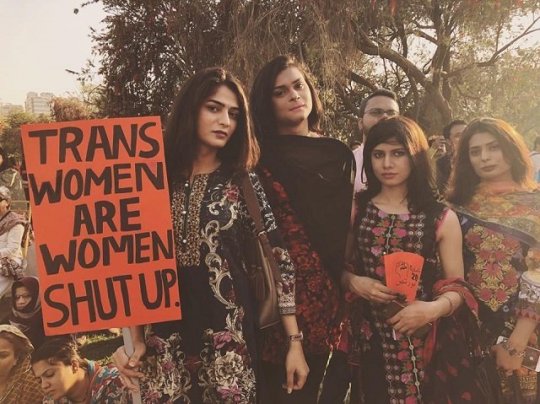
Western anthropologists are keen on seeing non-Western trans women as culturally constructed third genders, "neither male nor female," and often contrast them (a "legitimate" third gender accepted in its culture) with Western trans women (horrific parodies of female stereotypes).
There's a lot of smoke and mirrors and jargon used to obscure the fact that while each culture's trans women are treated as a single culturally constructed identity separate from all other trans women, cis women are treated as a universal category that can just be called "women."
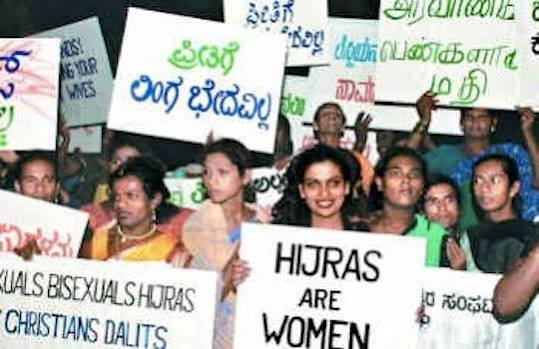
Even though Pakistani aurat and German Frauen and Guatemalan mujer will generally lead extraordinarily different lives due to the differences in culture, they are universally recognized as women.
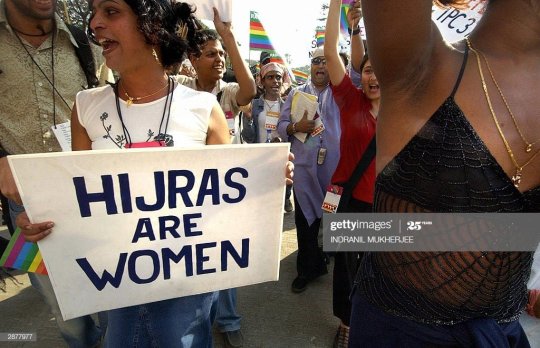
The transmisogynist will say, "Yes, but we can't ignore the way gender is culturally constructed, and hijras aren't trans women, they're a third gender. Now let's worry less about trans people and more about the rights of women in Burkina Faso."

In other words, to the transmisogynist, all cis women are women, and all trans women are something else.
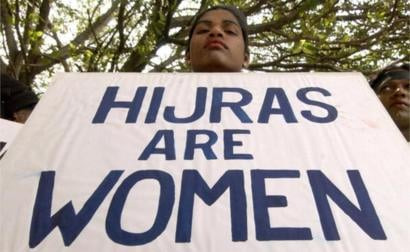
"But Kat, you're not Indian or Pakistani. You're not a hijra or khwaja sira, why is this so important to you?"
Have you ever heard of the Neapolitan third gender "femminiello"? It's the term my moniker "The Femme in Yellow" is derived from, and yes, I'm Neapolitan. Shut up.
I'm going to tell you a little bit about the femminielli, and I want you to see if any of this sounds familiar. Femminielli are a third gender in Neapolitan culture of people assigned male at birth who have a feminine gender expression.
They are lauded and respected in the local culture, considered to be good omens and bringers of good luck. At festivals you'd bring a femminiello with you to go gambling, and often they would be brought in to give blessings to newborns. Noticing anything familiar yet?
Oh and also they were largely relegated to begging and sex work and were not allowed to be educated and many were homeless and lived in the back alleys of Naples, but you know we don't really like to mention that part because it sounds a lot less romantic and mystical.
And if you're sitting there, asking yourself why a an accurate description of femminiello sounds almost note for note like the same way hijras get described and talked about, then you can start to understand why that picture at the start of this post has so much meaning for me.
And you can also start to understand why I get so frustrated when I see other queer people buy into this fool notion that for some reason the transes from different cultures must never mix.
That friend I mentioned earlier is a white American trans woman. She spent years living in India, and as I recal the story the family she was staying with saw her as a white, foreign hijra and she was asked to use her magic hijra powers to bless the house she was staying in.
So when it comes to various cultural trans identities there are two ways we can look at this. We can look at things from a standpoint of expressed identity, in which case we have to preferentially choose to translate one word for the local word, or to leave it untranslated.
If we translate it, people will say we're artificially imposing an outside category (so long as it's not cis people, that's fine). If we don't, what we're implying, is that this concept doesn't exist in the target language, which suggests that it's fundamentally a different thing
A concrete example is that Serena Nanda in her 1990 and 2000 books, bent over backwards to say that Hijras are categorically NOT trans women. Lots of them are!
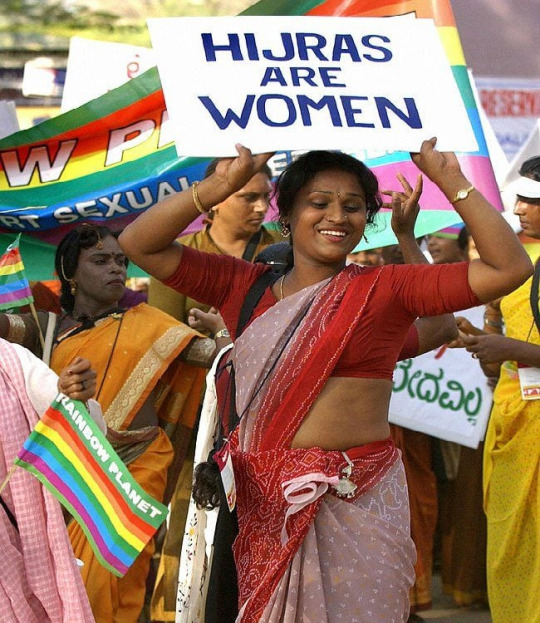
And Don Kulick bent over backwards in his 1998 book to say that travesti are categorically NOT trans women, even though some of the ones he cited were then and are now trans women.
The other option, is to look at practice, and talk about a community of practice of people who are AMAB, who wear women's clothing, take women's names, fulfill women's social roles, use women's language and mannerisms, etc WITHIN THEIR OWN CULTURAL CONTEXT.
This community of practice, whatever we want to call it - trans woman, hijra, transfeminine, femminiello, fairy, queen, to name just a few - can then be seen to CLEARLY be trans-national and trans-cultural in a way that is not clearly evident in the other way of looking at things.
And this is important, in my mind, because it is this axis of similarity that is serving as the basis for a growing transnational transgender rights movement, particularly in South Asia. It's why you see pictures like this one taken at the 2018 Aurat March in Karachi, Pakistan.
And it also groups rather than splits, pointing out not only points of continuity in the practices of western trans women and fa'afafines, but also between trans women in South Asia outside the hijra community, and members of the hijra community both trans women and not.
To be blunt, I'm not all that interested in the word trans woman, or the word hijra. I'm not interested in the word femminiello or the word fa'afafine.
I'm interested in the fact that when I visit India, and I meet hijras (or trans women, self-expressed) and I say I'm a trans woman, we suddenly sit together, talk about life, they ask to see American hormones and compare them to Indian hormones.
There is a shared community of practice that creates a bond between us that cis people don't have. That's not to say that we all have the exact same internal sense of self, but for the most part, we belong to the same community of practice based on life histories and behavior.
I think that's something cis people have absolutely missed - largely in an effort to artificially isolate trans women. This practice of arguing about whether a particular "third gender" label = trans women or not, also tends to artificially homogenize trans women as a group.
You see this in Kulick and Nanda, where if you read them, you could be forgiven for thinking all American trans women are white, middle class, middle-aged, and college-educated, who all follow rigid codes of behavior and surgical schedules prescribed by male physicians.
There are trans women who think of themselves as separate from cis women, as literally another kind of thing, there are trans women who think of themselves as coterminous with cis women, there are trans women who think of themselves as anything under the sun you want to imagine.
The problem is that historically, cis people have gone to tremendous lengths to destroy points of continuity in the transgender community (see everything I've cited and more), and particularly this has been an exercise in transmisogyny of grotesque levels.
The question is do you want to talk about culturally different ways of being trans, or do you want to try to create as many neatly-boxed third genders as you can to prop up transphobic theoretical frameworks? To date, people have done the latter. I'm interested in the former.
I guess what I'm really trying to say with all of this is that we're all family y'all.
#transgender#third gender#hijras#femminielli#trans women are women#trans solidarity#trans rights#transmisogyny#transunity#transunitism#this is what trans unity looks like
7K notes
·
View notes
Text

Hijras (serie), 2012
Photo: Isabel Muñoz
199 notes
·
View notes
Text
DECOLONIAL QUEER HISTORY SERIES
Hijras are the third gender of South Asia. Some hijras might identify as women, but others would also identify as neither male or female, or as “in-between”.
Hijras have been part of South Asia’s culture for thousands of years. They were celebrated in sacred Hindu texts, including the Mahabharata, and they enjoyed influential positions in the courts of the Mughal empire.
The current climate of discrimination and ostracism they suffer is a direct consequence of colonialism. When Britain colonized India a lot of laws were passed criminalizing sexual diversity and non-binary genders expressions, including Hijras, who created their own communities and their own secret code language for protection.
Since 2014 legislations to recognized a separate third gender category on official documents have been passed in India, Nepal, Pakistan, and Bangladesh.
Photographer Dayanita Singh wrote about her friendship with an Indian hijra where she reported, “When I once asked her if she would like to go to Singapore for a sex change operation, she told me, ‘You really do not understand. I am the third sex, not a man trying to be a woman. It is your society’s problem that you only recognise two sexes.'”
sources: theguardian.com/pbs.org
DISCLAIMER: Terms under the LGBTQ+ umbrella are Western terms.
A lot of these communities might not or would not have felt identified with such terms. Due to colonialism, imperialism, and aggressive religious expansions a lot of these communities' history was destroyed, however they managed to survive to this day one way or another, and they are part of the global queer community and history.

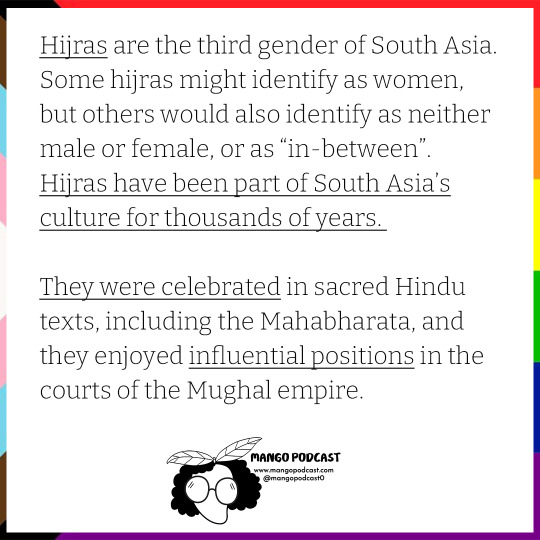
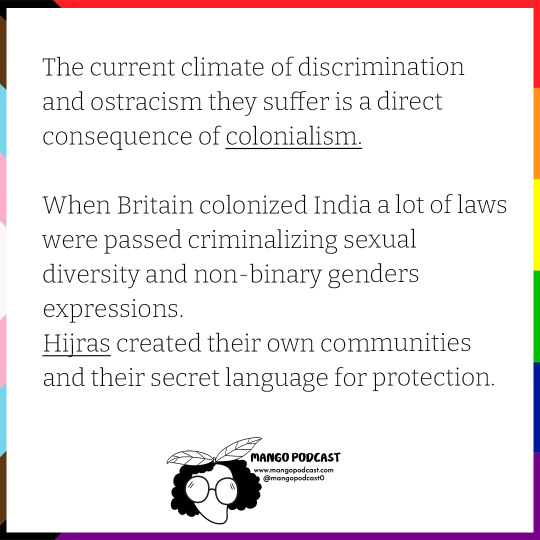

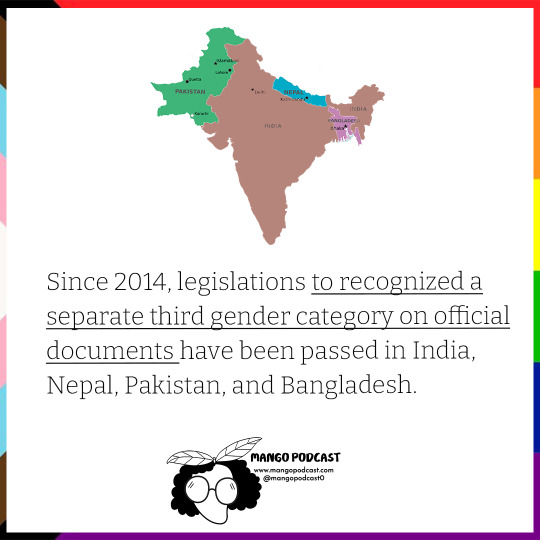

#decolonialqueerhistory#hijras#hijra#southasia#india#nepal#pakistan#bangladesh#decolonize#decolonise#lgbtq+#black history#history#africa#europe#leftism#nonbinary#decolonisation#united kingdom
10 notes
·
View notes
Text
I watched 5 Weddings (2018) and it was so good 🥺

#rajkummar rao#nargis fakhri#bo derek#hijras#bollywood#bollywood movies#bollywood weddings#5 weddings#5 weddings 2018#5 weddings movie#indian movies
2 notes
·
View notes
Text
Trans women in Bangladesh must beg to live, but face arrest for begging.
2 notes
·
View notes
Text
It is so important to understand things.
I live in a culture that has for centuries been sympathetic towards trans and intersex people but the problem is that people (the mass public) didn't actually understand what dysphoria is. With the new transgender act, I fear people are gonna hate dysphoric people instead of criticising the medical, education and law systems in our country, along with how parents disown their kids who have dysphoria and so dysphoric people have no where to go but live in extremely cultish societies on the streets (where the head of those societies is often rude to them & they have to endure it coz they aren't welcome back home) so they have to live a life where they are forced to earn their living through begging or sex work. Coz the mass public doesn't understand dysphoria and labels them as weird & so deprives them of proper jobs.
#& it really breaks my heart that there is no proper cure in either east or west yet for dysphoria#hijra#hijras#hijra community#desi#Pakistan
4 notes
·
View notes
Text
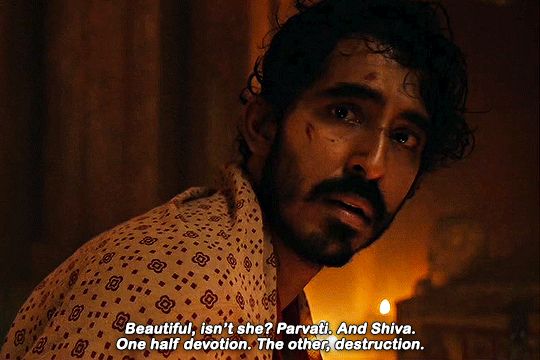

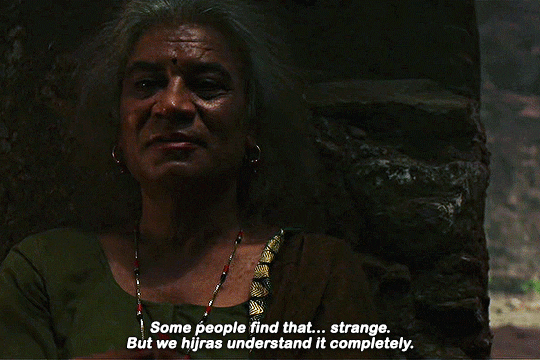
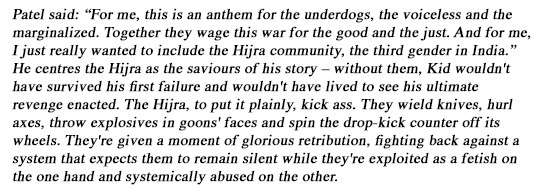

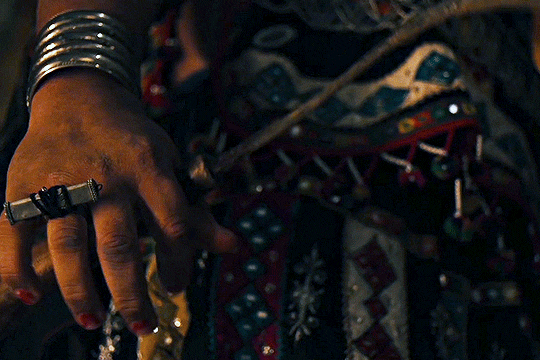




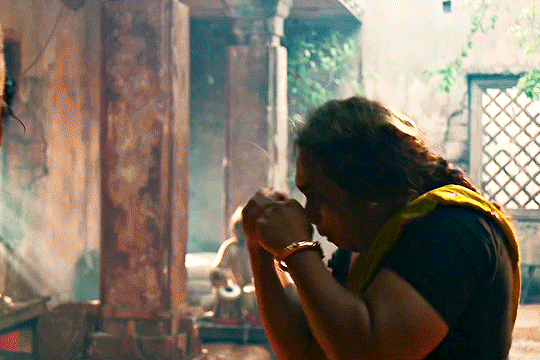


MONKEY MAN (2024)
#augh it was so good i couldn't stop thinking about it#and also i need to rewatch it because i kept getting distracted by dev patel's big beautiful eyes.....#does he have a licence for those#the mythology the politics the sectarian rife the hijra community and outsider he wove so many things together so beautifully#and also. he gave us an adorable dog. which is necessary to me.#and also he took his shirt off multiple times.#monkey man#dev patel#spoilers#long post#transgender
16K notes
·
View notes
Text
btw monkey man was a blast, but specifically there's a scene where mr dev patel is working out and a group of hijra women are watching him and i was thinking "no, they'd be cheering and hollering, this is unrealistic" and then he takes his shirt off and the cheering and hollering begins and i was satisfied
#monkey man#dev patel understood the assignment#although i do wish i could find more on whether the extras in those scenes were actually hijra and whether they got properly paid#i know the main pov character for those scenes is Not#but i hope some thought was put into how to include the community
446 notes
·
View notes
Video
INDIA10184 by a Psychiatrist's view
Via Flickr:
a local nomad in Kolkata Photography’s new conscience linktr.ee/GlennLosack linktr.ee/GlennLosack
#albino#vitiligo#cremation#deformed#Muharrum#laborers#portraits#yamuna#DHANBHAD#sADHUS#RICKSHAW#homeless#HIJRAS#Taj#Mahal#slums#Azadpur#india#varanasi#photographer#kolkata#mathura#hinduism#islam#muslim#jamamasjid#glennlosack#streetphotographer#STREETPHOTOGRAPHY#delhi
1 note
·
View note
Text
girls want boys who respect Hijra and who stabs people upholding unjust systems with knives they clench in their teeth
259 notes
·
View notes
Text
In addition to my Monkey Man post from earlier, the always kind & sweet Aparna Verma (author of The Phoenix King, check it out) asked that I do a thread on Hijras, & more of the history around them, South Asia, mythology (because that's my thing), & the positive inclusion of them in Monkey Man which I brought up in my gushing review.
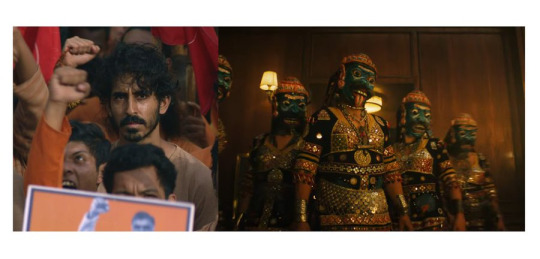
Hijra: They are the transgender, eunuch, or intersex people in India who are officially recognized as the third sex throughout most countries in the Indian subcontinent. The trans community and history in India goes back a long way as being documented and officially recognized - far back as 12th century under the Delhi Sultanate in government records, and further back in our stories in Hinduism. The word itself is a Hindi word that's been roughly translated into English as "eunuch" commonly but it's not exactly accurate.
Hijras have been considered the third sex back in our ancient stories, and by 2014 got official recognition to identify as the third gender (neither male or female) legally. Pakistan, Nepal, Bangladesh, and India have accepted: eunuch, trans, intersex people & granted them the proper identification options on passports and other government official documents.
But let's get into some of the history surrounding the Hijra community (which for the longest time has been nomadic, and a part of India's long, rich, and sometimes, sadly, troubled history of nomadic tribes/people who have suffered a lot over the ages. Hijras and intersex people are mentioned as far back as in the Kama Sutra, as well as in the early writings of Manu Smriti in the 1st century CE (Common Era), specifically said that a third sex can exist if possessing equal male and female seed.
This concept of balancing male/female energies, seed, and halves is seen in two places in South Asian mythos/culture and connected to the Hijra history.
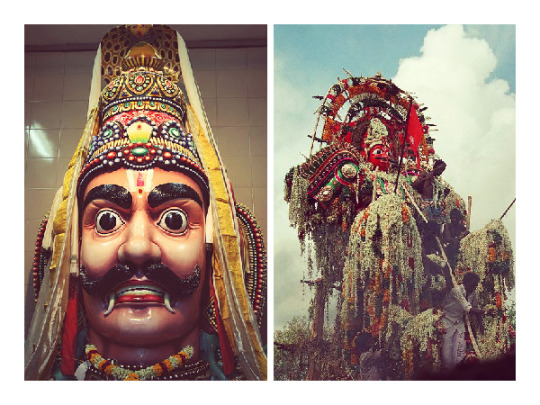
First, we have Aravan/Iravan (romanized) - who is also the patron deity of the transgender community. He is most commonly seen as a minor/village deity and is depicted in the Indian epic Mahabharata. Aravan is portrayed as having a heroic in the story and his self-sacrifice to the goddess Kali earns him a boon.

He requests to be married before his death. But because he is doomed to die so shortly after marriage, no one wants to marry him.
No one except Krishna, who adopts his female form Mohini (one of the legendary temptresses in mythology I've written about before) and marries him. It is through this union of male, and male presenting as female in the female form of Mohini that the seed of the Hijras is said to begun, and why the transgender community often worships Aravan and, another name for the community is Aravani - of/from Aravan.
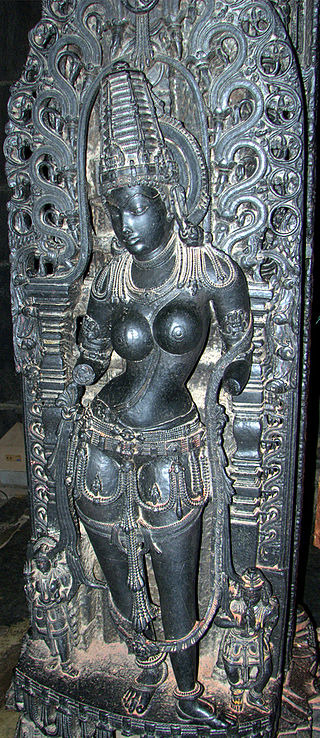
But that's not the only place where a gender non conforming divine representation can be seen. Ardhanarishvara is the half female form of lord Shiva, the destroyer god.
Shiva combines with his consort Parvarti and creates a form that represents the balancing/union between male/female energies and physically as a perfectly split down the middle half-male half-female being. This duality in nature has long been part of South Asian culture, spiritual and philosophical beliefs, and it must be noted the sexuality/gender has often been displayed as fluid in South Asian epics and the stories. It's nothing new.

Many celestial or cosmic level beings have expressed this, and defied modern western limiting beliefs on the ideas of these themes/possibilities/forms of existence.
Ardhanarishvara signifies "totality that lies beyond duality", "bi-unity of male and female in God" and "the bisexuality and therefore the non-duality" of the Supreme Being.
Back to the Hijra community.
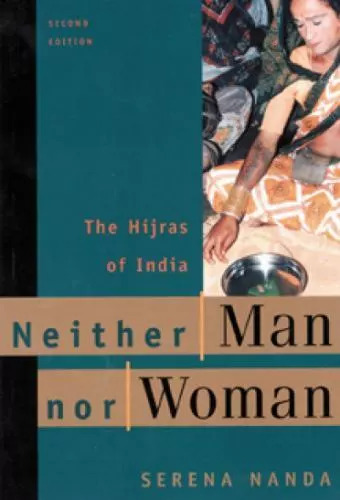
They have a complex and long history. Throughout time, and as commented on in the movie, Monkey Man, the Hijra community has faced ostracization, but also been incorporated into mainstream society there. During the time of the Dehli Sultanate and then later the Mughal Empire, Hijras actually served in the military and as military commanders in some records, they were also servants for wealthy households, manual laborers, political guardians, and it was seen as wise to put women under the protection of Hijras -- they often specifically served as the bodyguards and overseers of harems. A princess might be appointed a Hijra warrior to guard her.

But by the time of British colonialism, anti-Hijra laws began to come in place folded into laws against the many nomadic tribes of India (also shown in part in Monkey Man with Kid (portrayed by Dev Patel) and his family, who are possibly
one of those nomadic tribes that participated in early theater - sadly by caste often treated horribly and relegated to only the performing arts to make money (this is a guess based on the village play they were performing as no other details were given about his family).
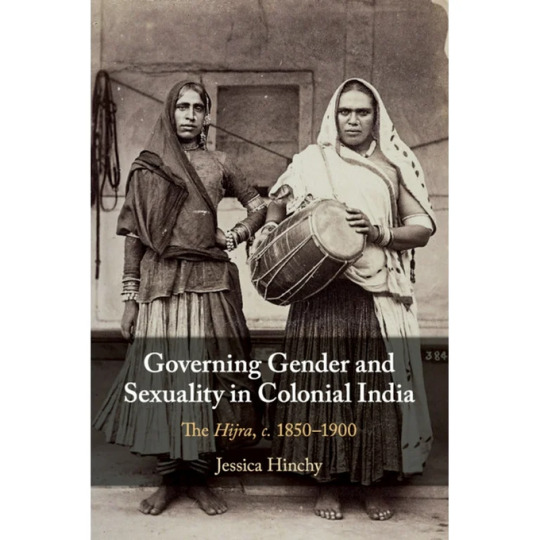
Hijras were criminalized in 1861 by the Indian Penal Code enforced by the British and were labeled specifically as "The Hijra Problem" -- leading to an anti-Hijra campaign across the subcontinent with following laws being enacted: punishing the practices of the Hijra community, and outlawing castration (something many Hijra did to themselves). Though, it should be noted many of the laws were rarely enforced by local Indian officials/officers. But, the British made a point to further the laws against them by later adding the Criminal Tribes Act in 1871, which targeted the Hijra community along with the other nomadic Indian tribes - it subjected them to registration, tracking/monitoring, stripping them of children, and their ability to sequester themselves in their nomadic lifestyle away from the British Colonial Rule.
Today, things have changed and Hijras are being seen once again in a more positive light (though not always and this is something Monkey Man balances by what's happened to the community in a few scenes, and the heroic return/scene with Dev and his warriors). All-hijra communities exist and sort of mirror the western concept of "found families" where they are safe haven/welcoming place trans folks and those identifying as intersex.
These communities also have their own secret language known as Hijra Farsi, which is loosely based on Hindi, but consists of a unique vocabulary of at least 1,000 words.
As noted above, in 2014, the trans community received more legal rights.
Specifically: In April 2014, Justice K. S. Radhakrishnan declared transgender to be the third gender in Indian law in National Legal Services Authority v. Union of India.
Hijras, Eunuchs, apart from binary gender, be treated as "third gender" for the purpose of safeguarding their rights under Part III of our Constitution and the laws made by the Parliament and the State Legislature. Transgender persons' right to decide their self-identified gender is also upheld and the Centre and State Governments are directed to grant legal recognition of their gender identity such as male, female or as third gender.
I've included some screenshots of (some, not all, and certainly not the only/definitive reads) books people can check out about SOME of the history. Not all again. This goes back ages and even our celestial beings/creatures have/do display gender non conforming ways.
There are also films that touch on Hijra history and life. But in regards to Monkey Man, which is what started this thread particularly and being asked to comment - it is a film that positively portrayed India's third sex and normalized it in its depiction. Kid the protagonist encounters a found family of Hijras at one point in the story (no spoilers for plot) and his interactions/acceptance, living with them is just normal. There's no explaining, justifying, anything to/for the audience. It simply is. And, it's a beautiful arc of the story of Kid finding himself in their care/company.
#hijra#trans representation#monkey man#dev patel#transgender#trans rights#trans rights are human rights#third sex#indian history#indian culture#colonialism#imperialism#south Asian mythos#South Asian myths#Aravan#Iravan#Mahabharata#hindu mythology#hindu gods#kali goddess#krishna#hindu mythology art#Ardhanarishvara#Shiva#Parvarti#sexuality#gender fluid#fluid sexuality#trans community#transgender rights
336 notes
·
View notes
Text
Me, talkign to my friends: yeah theres this neat action film coming out soon that dev patel stars in/wrote/directed, i hope its fun
Me, going into the theater: im ready to have a good time, hopefully this will be like bullet train and have some cool visuals and fun acting :)))
Me, exiting the theater:






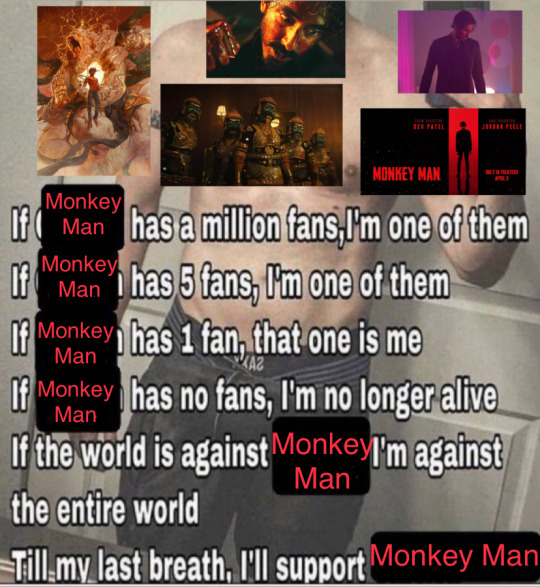
IN THAT ORDER
#monkey man#ive already watched it another 2 times#im not normal about this movie#i will have it on dvd that is a promise#i love it when people have a project they put their everything into#its so beautiful#dev patel#i was breaking down the lighting on each scene in the theater#dev patel my beloved#let this man cook#he deserves it#hijra rep goes hard#minrorities SHOULD get to rip open their oppressors with a khadga while dressed as a goddess of time and destruction#as a treat
295 notes
·
View notes
Text

#Monkey man#Everything was so so good about this movie#The hijra kicking ass The knife teeth scene The politics The REVENGE Everything omg
291 notes
·
View notes
Text
Can't believe Dev Patel really said, I believe in hijra rights, hijra rights to beat up bigots with steel pipes! He was so valid for this 🙏🏻
164 notes
·
View notes
Text
So I watched Monkey Man today and like most people I’m probably going to be thinking about it for a while. The imagery, music, message and symbolism was thick with this one.
For now, I am going to go to bed dreaming about that boss ass Hijra crew arriving with machetes to tear up some fascists, and how Dev Patel beat a misogynistic, homophobic, killer cop to death with a shiny, sparkly high heel shoe.
And about how the Hindu nationalist guru who caused so much destruction and oppression dies by getting stabbed in his forehead (where Hindus believe the third eye is located) with one of the knobs of his pathankal/paduka (slippers), like the most fucked pottu/bindi.

150 notes
·
View notes
Text

[x]
Bangladesh’s first mosque specifically for hijra Muslims has officially opened its doors, as members of the legally recognized “third gender” and transgender communities seek refuge from abuse and discrimination.
The mosque consists of a single-room building with a tin roof, paid for and built by hijras near the city of Mymensingh on government-donated land after hijra worshippers were expelled from the local community. The land already contains a graveyard and one plot, belonging to a hijra woman who was denied burial at a local mosque last year.
#things like this make me so happy bc u know what EVERYONE deserves to worship!!!!!!!!!!!!#hijra#south asia#islam#bangladesh#lgbt
236 notes
·
View notes